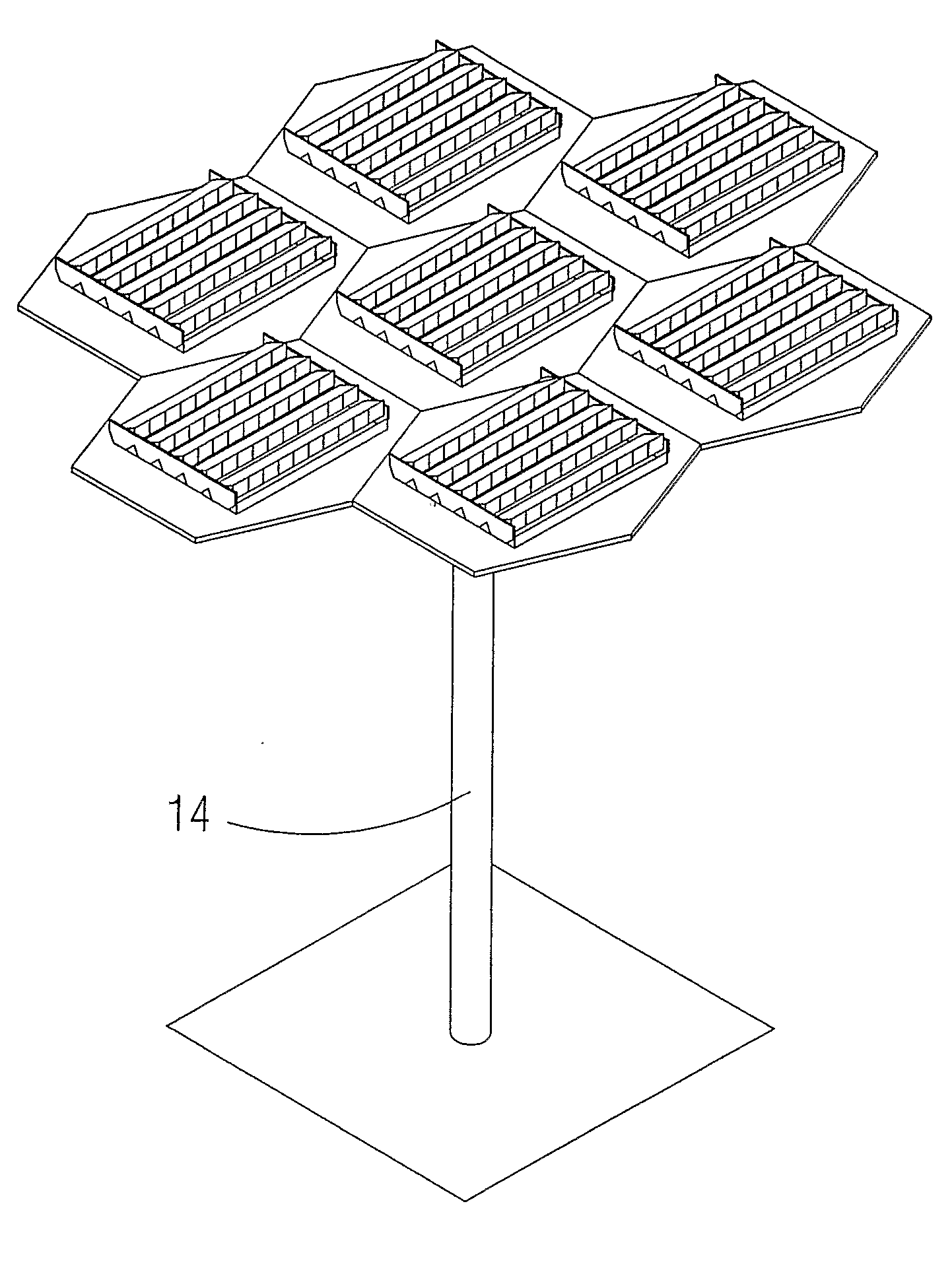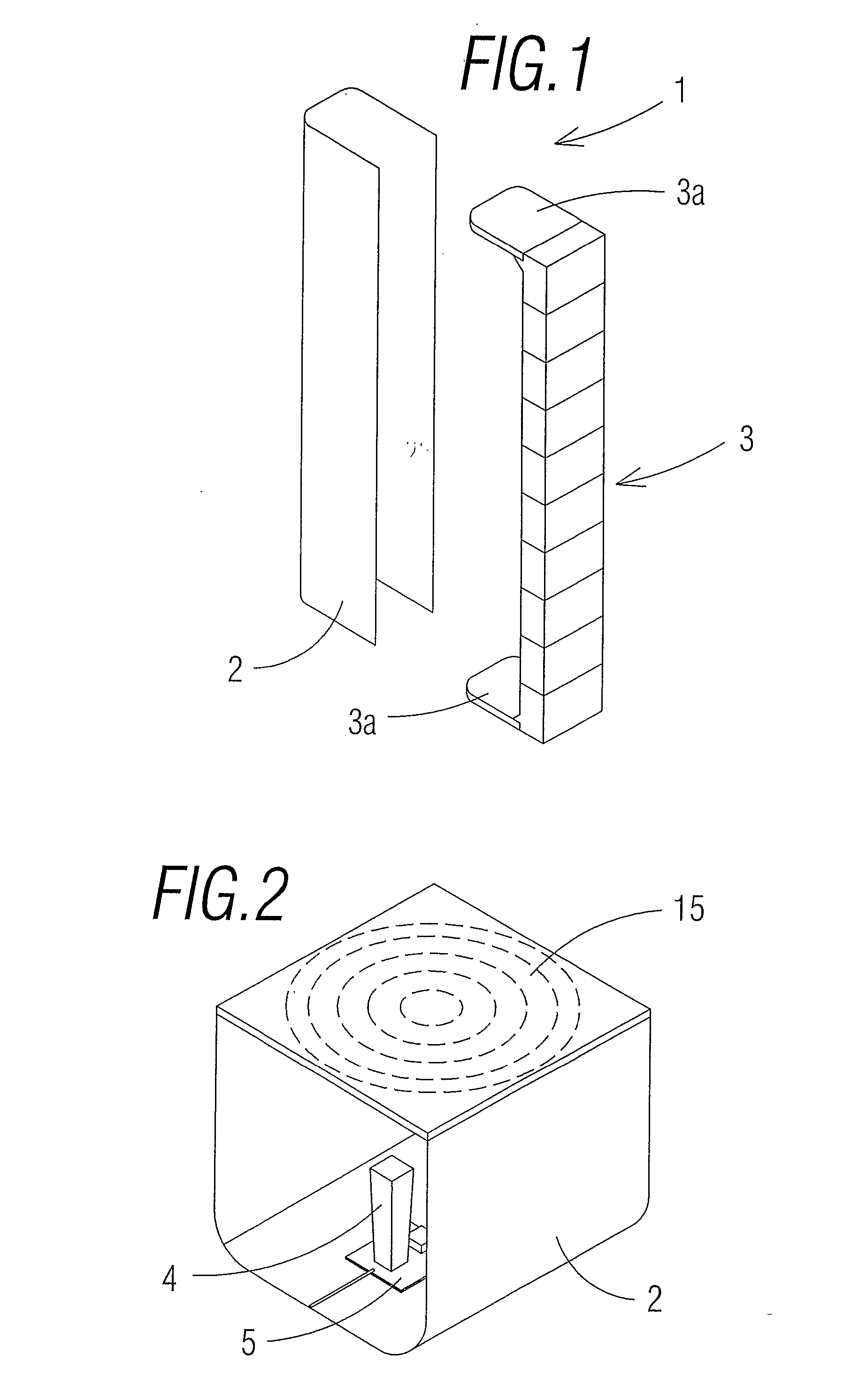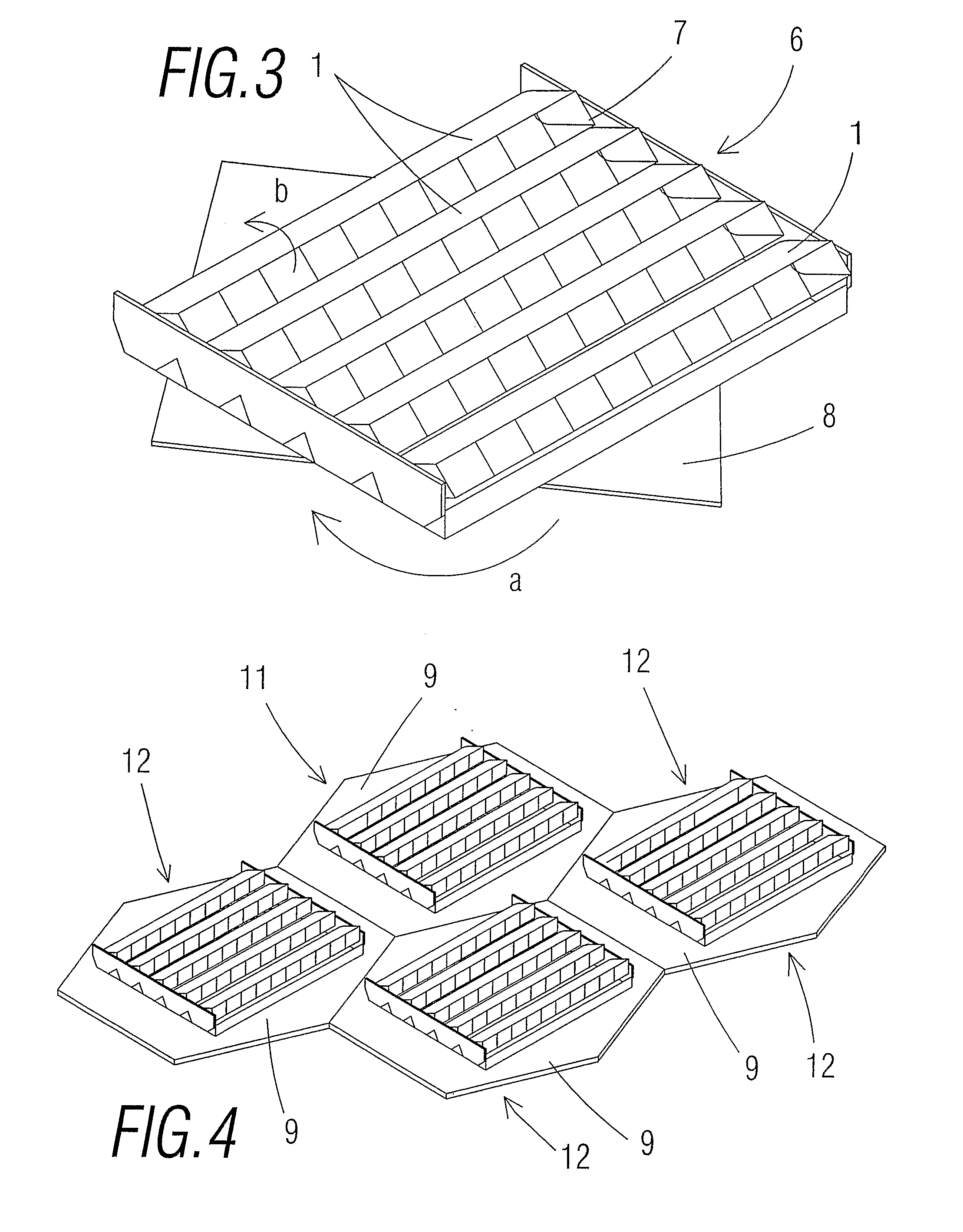Sub-Module for Photovoltaic Concentration Modules, Photovoltaic Concentration Module, Solar Power Installation, Packing Method and Position Calibration Method for Photovoltaic Concentration Modules
- Summary
- Abstract
- Description
- Claims
- Application Information
AI Technical Summary
Benefits of technology
Problems solved by technology
Method used
Image
Examples
Embodiment Construction
[0010]This present invention has been developed for the purpose of providing a sub-module for application with photovoltaic concentration modules, a photovoltaic concentration module, and a solar power installation that solves the previously stated disadvantages, in addition providing other additional advantages that will become clear from the description that is included below.
[0011]The photovoltaic concentration module of the present invention in particular applicable to noticeably flat surfaces is characterised in that it is made up of a plurality of sub-modules of the type that are described below arranged in a parallel and equidistant manner to each other that are supported on a platform that is fitted in an appreciably horizontal manner compared to the support surface or equally to the ground (this means, it is essentially parallel to the surface on which the entirety of the module rests), said platform being arranged on a support structure to be fitted to the surface of the r...
PUM
 Login to View More
Login to View More Abstract
Description
Claims
Application Information
 Login to View More
Login to View More - R&D
- Intellectual Property
- Life Sciences
- Materials
- Tech Scout
- Unparalleled Data Quality
- Higher Quality Content
- 60% Fewer Hallucinations
Browse by: Latest US Patents, China's latest patents, Technical Efficacy Thesaurus, Application Domain, Technology Topic, Popular Technical Reports.
© 2025 PatSnap. All rights reserved.Legal|Privacy policy|Modern Slavery Act Transparency Statement|Sitemap|About US| Contact US: help@patsnap.com



